Blockchain
Upcoming Layer 1 merging from UAE: Gaya Blockchain

Gaya Blockchain is an upcoming innovative blockchain that unifies gaming, decentralized finance (DeFi), SocialFi, and real-world asset tokenization into a single, user-friendly ecosystem.
Raised 20 million AED from Capstone Technology Group as their lead VC based out of UAE.
Gaya will be powered by its native utility token, GayaCoin, GAYA aims to bridge fragmented digital domains while promoting sustainability, inclusivity, and user empowerment.
– GayaCoin public-sale is mentioned to be released Q1 2025.
GAYA has ambitions to not just please the institutional market as the most advanced Blockchain coming from UAE but also to facilitate a better consumer engagement than EVM for developers and users.
Founding team Abdullah Al-Maksour, Aws Bashir & Sanad Al-Asiri.
Twitter (X): https://x.com/GayaBlockchain
Instagram: https://www.instagram.com/gaya.blockchain?igsh=MTFwY3E2eGxuZzd2dA==
Website: https://www.gayablockchain.io/
Key Highlights
- Unified Ecosystem: GAYA integrates diverse digital domains like gaming, DeFi, SocialFi, and tokenized real-world assets into a cohesive platform.
- Sustainability: The platform pioneers eco-conscious blockchain practices, including carbon tracking and incentivized green initiatives.
- Empowering Users: Democratizes access to premium assets and decentralized governance, giving users control over the platform’s future.
- Strategic Regional Leadership: As the first Layer 1 blockchain in the UAE, GAYA is uniquely positioned to bridge local and global blockchain adoption.
Vision and Mission
GAYA envisions a blockchain future driven by sustainability, inclusivity, and user empowerment. Its mission includes:
- Unifying Digital Ecosystems: Bringing together gaming, DeFi, SocialFi, and tokenized real-world assets on one accessible platform.
- Promoting Sustainability: Adopting eco-friendly blockchain practices, including low-energy protocols and incentives for green initiatives.
- Empowering Users: Ensuring decentralized governance and broad access to premium digital tools.
Ecosystem Overview
GAYA operates on a scalable Layer 1 blockchain and supports decentralized applications (dApps) powered by GayaCoin. Key components include:
1. Play-to-Earn Gaming
- Players earn GayaCoin and NFTs, which can be traded, staked, or reinvested within the ecosystem.
- Combines engaging gameplay with tangible financial rewards.
2. DeFi Platform
- Offers staking, lending, and borrowing services focused on sustainability.
- Prioritizes green investment opportunities.
3. SocialFi Integration
- Rewards content creators via decentralized revenue-sharing models.
- Features innovative governance structures to empower users.
4. Real-World Asset Tokenization
- Enables fractional ownership of tangible assets like renewable energy projects.
- Facilitates eco-conscious investments, making sustainable assets more accessible.
Strategic Positioning
As the UAE’s first Layer 1 blockchain, GAYA integrates culturally relevant and energy-efficient solutions to drive adoption both locally and globally. The platform’s unique positioning allows it to:
- Lead Sustainability: Through low-energy protocols and eco-incentives, GAYA minimizes its environmental impact.
- Empower Users: Fosters inclusivity with decentralized governance, enabling users to shape the platform.
- Support Developers: Provides robust tools like SDKs, APIs, and a Testnet, coupled with incentives such as grants and bug bounties.
Core Features of GAYA
GAYA’s unique infrastructure is designed to tackle major blockchain challenges like scalability, sustainability, interoperability, and governance. Below are its standout features:
1. Layer 1 Blockchain
- Proof-of-Stake (PoS) consensus mechanism eliminates energy-intensive mining.
- High Throughput: Processes thousands of transactions per second (TPS) with minimal latency.
- Security and Decentralization: Ensures robust network integrity without intermediary chains.
2. Eco-Conscious Design
- Carbon Tracking: Records the carbon impact of transactions, promoting eco-conscious usage.
- Sustainability Incentives: Rewards users who support green initiatives.
- Energy Efficiency: PoS minimizes energy consumption while maintaining security.
3. Interoperability via Gaya Virtual Machine (GVM)
- Ethereum Compatibility: Fully supports Ethereum Virtual Machine (EVM), enabling seamless migration of Ethereum-based dApps.
- Enhanced Collaboration: Promotes interoperability between GAYA and Ethereum ecosystems.
- Scalability: Built to handle large-scale dApps with consistent performance.
Key Milestones and Future Outlook
- Funding Success: GAYA has raised over 20 million AED from Capstone Technology Group, a leading UAE-based venture capital firm.
- Token Generation Event (TGE): Scheduled for Q1 2025, the launch of the $GAYA token marks a significant step forward.
- Leadership Team: The platform is led by Abdullah Al-Maksour, Aws Bashir, and Sanad Al-Asiri, all UAE residents with a vision to shape the blockchain landscape.
Why GAYA Stands Out
- Sustainability Focus: By embedding green practices and rewards, GAYA aligns with global sustainability goals.
- User-Centric Approach: Decentralized governance ensures users have a say in the platform’s evolution.
- Innovative Technology: GVM’s compatibility and high-performance features enable seamless dApp integration.
- Regional and Global Impact: As the UAE’s pioneering Layer 1 blockchain, GAYA bridges the gap between regional innovation and global adoption.
Conclusion
GAYA represents a paradigm shift in blockchain technology by seamlessly blending gaming, DeFi, SocialFi, and real-world asset tokenization. Its commitment to sustainability, inclusivity, and user empowerment makes it a standout platform in the blockchain space. With a robust infrastructure, eco-conscious design, and a forward-thinking team, GAYA is poised to redefine how digital ecosystems operate, both in the UAE and beyond.Stay tuned for the GayaCoin TGE launch in Q1 2025.
Blockchain
Binance Futures Introduces ZKP, GUA, IR Perpetual Contracts

Binance Futures has expanded its derivatives suite once again, announcing the launch of USDS-margined perpetual contracts for ZKP, GUA, and IR. The new listings went live on December 21, 2025, at 10:00 UTC, offering traders access to high-leverage instruments in an increasingly fast-moving crypto derivatives market.
The exchange’s newest contracts—ZKPUSDT, GUAUSDT, and IRUSDT—allow users to take positions with leverage of up to 40x for ZKP and 20x for both GUA and IR, introducing broader strategic options for traders navigating shifting market conditions.
Expanding Derivatives Access With High Leverage
Binance’s introduction of ZKP, GUA, and IR perpetual contracts aligns with its ongoing push to diversify available trading instruments and deepen participation in niche and emerging assets. The USDS-margined structure provides a more risk-managed alternative for traders seeking precision in volatile markets.
By offering up to 40x leverage on ZKPUSDT, Binance is positioning the asset for increased speculation and potential liquidity inflows. Meanwhile, GUAUSDT and IRUSDT, capped at 20x leverage, still provide substantial room for derivatives-based trading without exposing users to extreme risk levels seen in higher-leverage products.
Although market leaders have yet to issue statements regarding Binance’s newest listings, analysts note that the exchange’s aggressive derivatives expansion is consistent with its broader strategic goals. Each new perpetual contract typically triggers shifts in trading volume, hedging behavior, and liquidity distribution across spot and futures markets.
A Strategic Pattern Emerges
Binance’s latest move follows its earlier introduction of the BOBUSDT perpetual contract with 20x leverage—hinting at a clear pattern of expanding leverage-based offerings across mid-cap and emerging crypto assets. The strategy appears designed to capture both speculative interest and advanced trading flow during a period of increased market volatility.
Among the newly listed assets, zkPass (ZKP) has shown notable price movement. According to recent data, ZKP trades near $0.11 with a market capitalization of $22.68 million. The token surged 12.84% in the past 24 hours, though long-term performance remains weak, declining 52.88% over extended periods. This volatility makes ZKP a prime candidate for derivatives trading, where leverage can amplify both opportunities and risks.
Broader Market Implications
The addition of these perpetual contracts is likely to influence short-term liquidity profiles for ZKP, GUA, and IR. Perpetuals often act as catalysts for increased market activity, attracting arbitrageurs, leverage-based traders, and algorithmic strategies. As liquidity deepens on Binance Futures, traders may use these instruments to hedge existing positions or speculate on short-term moves, especially amid a highly reactive market environment.
While official commentary remains limited, the introduction underscores Binance’s commitment to maintaining dominance in the derivatives sector—an area that consistently attracts higher volumes than traditional spot trading.
With leverage, USDS-margined efficiency, and newly emerging assets at the forefront, the latest listings provide traders with additional tools—but also reinforce the need for caution in a landscape where volatility remains the norm.
Blockchain
Bitcoin and BNB Analysis: Blazpay Phase 5 Launches as Investors Hunt for the Top Crypto Coins to Buy
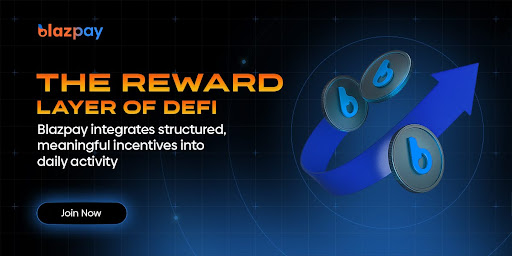
The crypto market continues to evolve with investors seeking high-potential tokens and utility-driven platforms. Among the best presale crypto opportunities, Blazpay stands out in Phase 5, attracting attention as one of the most promising AI crypto coins. Alongside established cryptocurrencies like Bitcoin and BNB, the presale offers an early entry point with asymmetric upside potential, making it a key focus for anyone evaluating the next crypto coins to buy
Blazpay Presale Phase 5 – The Smart Move for Crypto Investors
Blazpay has officially started Phase 5, with the price currently set at $0.0135 and scheduled to increase to $0.0135 after this phase closes. So far, 236M of the 249.04M BLAZ tokens have been sold, with $2.04M already raised. With AI-enhanced utilities, multichain support, and gamified services, Blazpay positions itself as a leading presale token among the best crypto presale platform options today.

Gamified Rewards and Perpetual Trading Benefits
Blazpay’s ecosystem combines gamified engagement with perpetual trading options. Investors are incentivized to complete milestones, participate in AI-driven tasks, and maintain long-term activity within the platform. The integrated AI provides automated trading suggestions, while multichain connectivity ensures fast, low-fee transactions across networks, making Blazpay a unique AI crypto coin presale with tangible utility.
Blazpay Referral Program – Rewarding Early Advocates
The Blazpay referral system allows investors to earn rewards whenever their referrals participate in the presale. This creates a compounding incentive for early adopters to expand their network and increase their token allocation, especially valuable during Phase 5, where the price is set to rise shortly.
Blazpay Price Prediction – Growth Potential in 2025
Industry analysts suggest that Blazpay’s Phase 5 presale positions the token for potential substantial gains post-launch. With AI-driven utilities, gamified rewards, and growing investor demand, projections suggest Blazpay could achieve significant milestones relative to established cryptocurrencies. Early-phase investors are particularly well-positioned to capitalize on future price movements.
Blazpay $2,000 Strategy – Early Entry Advantage
A $2,000 purchase during Phase 5 at $0.0135 secures roughly 170,213 BLAZ tokens. If the token reaches $0.05, the position grows to $8,511. At $0.10, it rises to $17,021. Should Blazpay hit $0.25, the investment could be worth $42,553. This demonstrates the asymmetric upside for early participants, making Phase 5 a key entry window.
How to Buy BLAZ
To participate before the Phase 4 supply sells out:
- Visit the official Blazpay presale page
- Connect your wallet (MetaMask, Trust Wallet, Coinbase Wallet)
- Select your preferred currency (ETH, BNB, USDT, SOL)
- Enter the amount you want to purchase
- Confirm the transaction and claim tokens after launch
Bitcoin (BTC) – Leading Crypto Coin to Buy for Institutional Exposure
Bitcoin (BTC) is trading at approximately $87,822 USD as of December 17, 2025, up 1.63% from the previous day. The digital asset continues to dominate the market, offering investors exposure to a proven store of value and hedge against inflation. Despite being 17% below last year’s highs, BTC shows strong institutional interest, with long-term holder supply at an 8-month low of 14.34 million BTC. With potential ETF inflows and ongoing adoption, Bitcoin remains one of the top crypto coins to buy for those seeking stability with growth potential in the digital asset space.
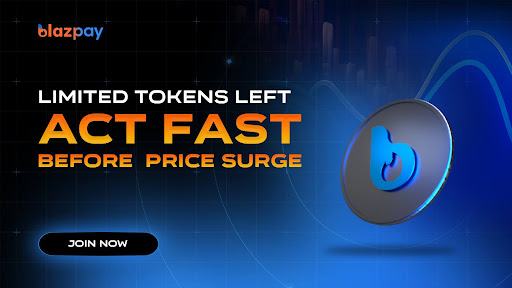
BNB – Established Blockchain Token Among Top Crypto Coins to Buy
BNB is holding steady around $857 USD, supported by $2.6 billion in 24-hour trading volume. The BNB Chain ecosystem continues expanding with initiatives like a new stablecoin targeting institutional usage, strengthening its utility in decentralized finance and trading platforms. While short-term fluctuations occur, BNB’s consistent network adoption and high liquidity make it a strong candidate among crypto coins to buy for investors looking to combine platform utility with long-term potential.
Conclusion
Blazpay’s Phase 5 presale offers investors the chance to access one of the most promising AI crypto coins early, with multichain utility and gamified rewards driving strong adoption. Complementing BTC’s store-of-value role and BNB’s utility-focused growth, this trio represents a strategic combination of new and established crypto assets. For investors seeking asymmetric potential alongside reliable blockchain leaders, Blazpay, Bitcoin, and BNB remain top crypto coins to buy in 2025.
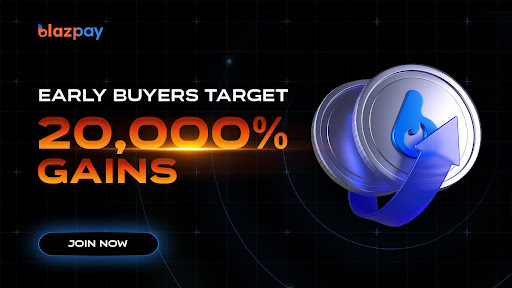
Join the Blazpay Community
Website: www.blazpay.com
Twitter: @blazpaylabs
Telegram: t.me/blazpay
FAQs
Q1. What makes Blazpay stand out among new crypto coins?
Its AI-enhanced automation, gamified services, and cross-chain capabilities differentiate it from traditional presale tokens.
Q2. How can I participate in Blazpay Phase 5?
Investors can buy BLAZ tokens via the official presale platform using the integrated steps for wallet connection and token purchase.
Q3. Why include Bitcoin and BNB in a presale portfolio?
BTC offers long-term stability, while BNB provides utility exposure in a major ecosystem, complementing early-stage tokens like Blazpay.
Q4. What is the risk/reward profile of Blazpay?
High potential upside due to Phase 5 presale pricing and AI-powered utility, balanced against typical early-stage crypto volatility.
Q5. How long until the next Blazpay price increase?
Phase 5 has just started, and the price will rise from $0.0135 to $0.0155 after completion.
Blockchain
DinoSol Debuts as a Meme-Driven Solana Token With Community-First Positioning

DinoSol (DINOSOL), a new entrant in the Solana meme-coin ecosystem, has launched with a strong emphasis on branding, simplicity, and early-stage community engagement. Built on Solana and centered around a playful, cartoon-styled dinosaur mascot, DinoSol joins the growing wave of culture-driven memecoins that leverage viral identity over utility-heavy roadmaps.
While still in its early development phase, DinoSol positions itself as a community-focused token aiming to expand through social momentum, low-cost Solana transactions, and a recognizable visual identity.
A Meme Coin Built on Solana’s High-Speed Infrastructure
DinoSol operates on the Solana blockchain, benefitting from fast, inexpensive transactions — a critical advantage for meme coin communities that thrive on rapid micro-trading, gifting, and community campaigns.
The project highlights accessibility as a core pillar: lightweight token mechanics, easy integration with Solana wallets, and a low barrier to entry for new users entering the meme token space.
Branding, Lore, and Community Identity
Unlike utility-first projects, DinoSol leans heavily on meme culture and its distinctive mascot. The design reflects exaggerated cartoon expressions, bright color themes, and a comedic aesthetic intended to resonate with viral crypto culture.
The branding suggests a lighthearted, entertainment-driven narrative — a key trait of recent memecoin successes.
DinoSol emphasizes community participation across its homepage and social channels, positioning the token as a collective movement rather than a structured technical product.
Tokenomics and Supply
Based on available public details, the token operates with a fixed supply model, a common approach in Solana meme tokens designed to reinforce scarcity and encourage early participation.
No complex staking, lockups, or reward mechanisms are described — aligning with its simplified meme-first positioning.
The focus remains on transparent supply, easy ownership, and frictionless trading.
Emerging Market Presence
As a newly listed asset on CoinMarketCap, DinoSol joins the expanding roster of Solana-based memecoins that have gained traction throughout 2025. While early trading metrics are still forming, interest has grown due to:
- Rapid community expansion
- Strong memeable branding
- Increasing visibility across Solana meme-fi culture
DINOSOL’s growth trajectory will depend largely on social momentum and how quickly the project can sustain community engagement.
Outlook
DinoSol is entering a highly active segment of the crypto market, where cultural resonance and simplicity often outweigh utility at launch. If meme sentiment on Solana continues to strengthen, DinoSol could benefit from the broader trend toward culture-and-community driven tokens.
For now, the project remains early-stage but well-positioned within Solana’s thriving meme ecosystem.
-

 Crypto3 years ago
Crypto3 years agoCardalonia Aiming To Become The Biggest Metaverse Project On Cardano
-

 Press Release5 years ago
Press Release5 years agoP2P2C BREAKTHROUGH CREATES A CONNECTION BETWEEN ETM TOKEN AND THE SUPER PROFITABLE MARKET
-
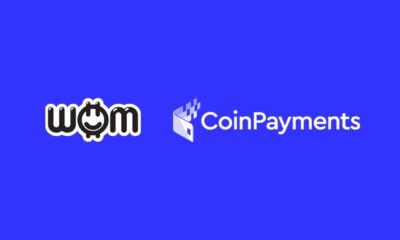
 Blockchain5 years ago
Blockchain5 years agoWOM Protocol partners with CoinPayments, the world’s largest cryptocurrency payments processor
-

 Press Release5 years ago
Press Release5 years agoETHERSMART DEVELOPER’S VISION MADE FINTECH COMPANY BECOME DUBAI’S TOP DIGITAL BANK
-
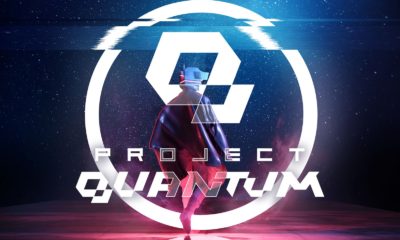
 Press Release5 years ago
Press Release5 years agoProject Quantum – Decentralised AAA Gaming
-

 Blockchain5 years ago
Blockchain5 years agoWOM Protocol Recommended by Premier Crypto Analyst as only full featured project for August
-
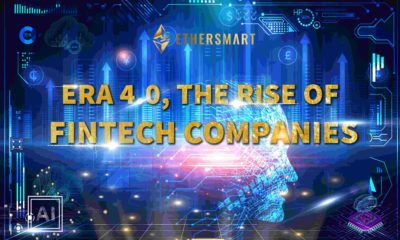
 Press Release5 years ago
Press Release5 years agoETHERSMART DEVELOPER’S VISION MADE FINTECH COMPANY BECOME DUBAI’S TOP DIGITAL BANK
-

 Blockchain6 years ago
Blockchain6 years ago1.5 Times More Bitcoin is purchased by Grayscale Than Daily Mined Coins






